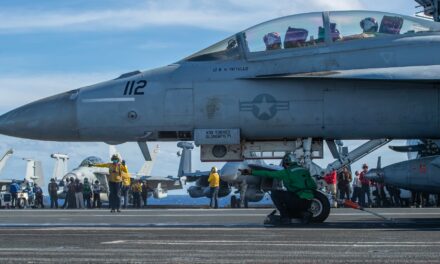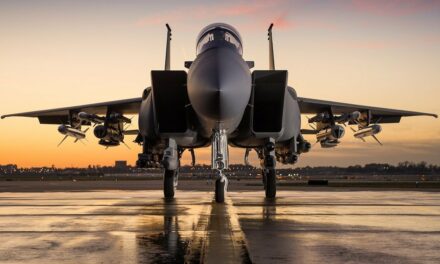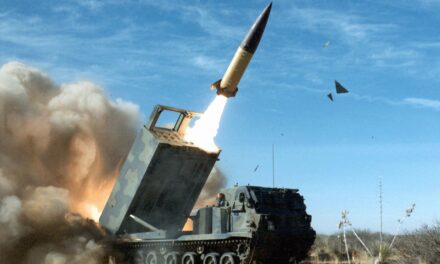We support our Publishers and Content Creators. You can view this story on their website by CLICKING HERE.
Key Points: China’s H-20 stealth bomber is set to challenge U.S. air dominance in East Asia, with design features resembling the B-21 Raider.
-The H-20’s flying-wing style and stealth attributes aim to evade radar detection and extend its range to targets like Taiwan, Guam, and Japan. Armed with conventional and nuclear payloads, the H-20 will bolster China’s nuclear triad and regional deterrence capabilities.
-Expected in the 2030s, the bomber signifies China’s rapid progress in strategic aviation, posing a direct challenge to U.S. supremacy. This development will intensify congressional scrutiny of U.S. defense strategies and arms control policies.
China’s H-20 Bomber Will Challenge U.S. Primacy In East Asia
The U.S. Air Force has its new B-21 Raider strategic bomber, and the Chinese are saying, “me too.” The People’s Liberation Army Air Force (PLAAF) is showing off its H-20 bomber. The PLAAF has released a new concept image, and this is meant to send a shiver down the bones of the U.S. Department of Defense. The H-20 hasn’t flown yet, but that could change as the PLAAF gets closer to challenging American air dominance in the Indo-Pacific.
This Airplane Looks Familiar
The H-20 looks to be a large, flying-wing-style airplane with stealth attributes. The giant aircraft will aim to have an enviable payload, and the range is expected to reach Taiwan, Guam, Japan, and South Korea. The idea is to evade radar detection and fly with other stealth jets such as the J-20 and J-35. The H-20 will carry dumb bombs, precision-guided munitions, and nuclear weapons, so it can be part of the Chinese nuclear triad.
Modern Bomber Looks to Dominate
The H-20 is expected to have radar-absorbing coatings to reduce discovery by air defenses. Curved engine inlets and a hidden engine will help radar evasion. It will probably not be as stealthy as American airplanes, but it should have enough stealth attributes to sneak through American and Allied air defenses. The H-20 likely has modern avionics and electronic warfare capabilities to jam enemy radar on the ground and enemy fighters in the air.
Computer-Generated Image of China’s Xian H-20 Stealth Bomber. Image Credit: Creative Commons.
According to Warrior Maven, “the true measure of the H-20s ability to compete with the B-2 and B-21 also relates to its thermal management, meaning the extent to which it can reduce the heat signature coming from the exhaust. The more a stealth aircraft and its surrounding air aligns with the temperature of the atmosphere, the less detectable it is to thermal sensors looking to spot ‘heat’ in the atmosphere.”
The Name of the Game Is Deterrence
It is unclear when the H-20 will be unveiled and taken to the skies, but it will likely enter serial production in the 2030s, similar to the B-21’s timeline. The H-20 will be a feather in the PLAAF’s cap and enable greater deterrence in the region. It could have the range to travel beyond East Asia.
The H-20 must be frustrating to American battle planners and defense acquisition analysts. Every time the U.S. Air Force leaps ahead with stealth airplanes, the Chinese are right there. They are open to copying U.S. designs and capabilities.
Challenges for the New Secretary of Defense
The U.S. Senate will likely have point-blank questions for Pete Hegseth, the nominee for Secretary of Defense. Namely, what is the plan for the Chinese air force? The PLAAF continues to leap ahead, and the United States sits back and watches as the media unveils new details about Chinese stealth capabilities.
Also, the H-20 will affect arms control talks if those negotiations happen. The Chinese have around 500 nuclear warheads, and it wants to have parity with the United States, which has 1,770 deployed weapons in the stockpile. China can negotiate from a position of strength if needed, knowing it has a robust nuclear triad with the H-20.
Overall, this is good news for the Chinese. The H-20 will have long-range, decent radar evasion, excellent situational awareness, and a large payload. The PLAAF is responding to the America tit-for-tat, and this is frustrating because the U.S. Air Force is plowing huge funds into the B-21 and Next-Generation Air Dominance fighter to replace the F-22. The new Secretary of Defense must be briefed on PLAAF capabilities and have answers for Congress in confirmation hearings. Then, he or she needs an execution plan to stay ahead of China. This will be the biggest test of the 21st century.
About the Author: Dr. Brent M. Eastwood
Brent M. Eastwood, PhD, is the author of Don’t Turn Your Back On the World: a Conservative Foreign Policy and Humans, Machines, and Data: Future Trends in Warfare, plus two other books. Brent was the founder and CEO of a tech firm that predicted world events using artificial intelligence. He served as a legislative fellow for U.S. Senator Tim Scott and advised the senator on defense and foreign policy issues. He has taught at American University, George Washington University, and George Mason University. Brent is a former U.S. Army Infantry officer. He can be followed on X @BMEastwood.

 Conservative
Conservative  Search
Search Trending
Trending Current News
Current News 





